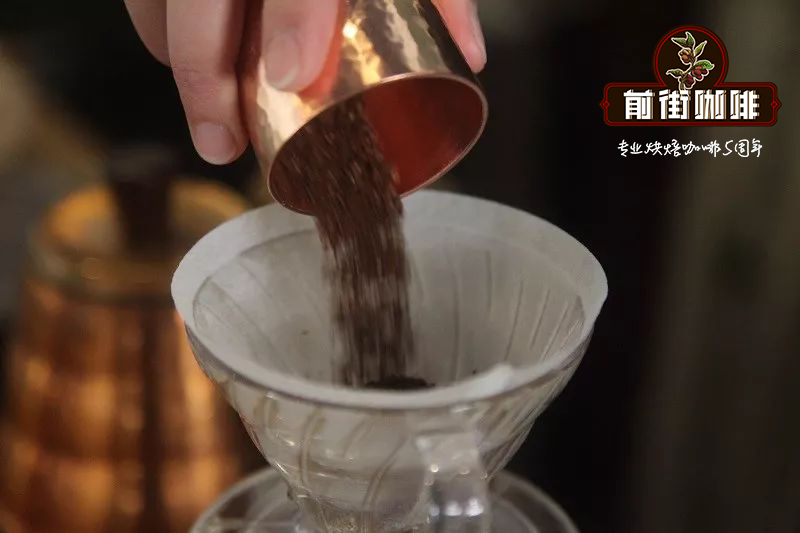The Origin Story of Old Manning in Indonesia what is the difference between Old Manning and Indian-style soiled beans

Professional coffee knowledge exchange more coffee bean information please follow the coffee workshop (Wechat official account cafe_style)
Growing at 1200mi Mel 1500m above sea level, the fruit acid of Manning not only becomes soft and moist after a long time of ripening.
Its mellow thickness and unique flavor can be more amazing in the mouth, which is the charm of old Manning.
Coffee farmers select high-quality raw beans and then use stringent monitoring standards to ripen for up to 24 months.
Turn the raw beans in the storage trough regularly while waiting to avoid dampness and mildew. The process is extremely labor-intensive.
It also creates a more mellow and lasting flavor of the aged Mantenin.
Flavor: sweet herb banana melon old tea feeling.
Treatment: semi-washing
Producing country: Indonesia
Suggested brewing methods: hand flushing, Philharmonic pressure, smart filter cup
Although there are different legends about the emergence of Indonesia's old Manning, if you take another Indian weathered bean (Monsooned coffee), you will find that the two are in a similar situation.
At the beginning, the beans from the two coffee-producing colonies were shipped back to the European sovereign state, and the wind stains and Chen Cang created these two kinds of beans with special methods! Both of them are not listed as new crop (fresh raw beans in the harvest season) as soon as they are harvested, but need complicated procedures to do post-processing.
The main results are as follows: (1) both of them have unique flavor. If you select the beans with sufficient quality and grade, you will find that the flavor is unique, and the sweetness, chocolate flavor and richness are all excellent.
(2) if it is not handled properly or the grade is not enough, the flavor will be very scary, and it is easy to taste the rotten old Mantenin and the wind stains of salty sea water.
Old Mantenin, has its unique conditions to put, first of all, beans, Mantenin original flavor is very rich, shown in the mouth of the body touch, very sticky, even in the passage of time, good Mantenin these features will not be missing, but some more exciting spicy flavor, will turn to a more warm and full-bodied caramel spicy because of long-term ripening, of course, the premise is that the aged beans are excellent. Otherwise, the result is counterproductive: rotten, gelatinous, dull wood (not scented cedar or cypress).
The production process of aged beans is to pick and harvest raw beans that meet the production conditions in that year, deal with the condition of shell beans with quite high moisture content, and place them directly in the storage tank of the warehouse, in order to avoid mildew or the accumulation of beans, resulting in temperature [ripening], you have to turn these shell beans, how to turn them? What's the flip frequency? Then it needs to be monitored for a long time depending on the situation of beans and experienced processing plants. Time is money. It is particularly appropriate here. If it is not handled well, it is not worth it at all.
The quantity of this batch of Aged Lington Mandheling is small, with only 300 bags left. in about 1994, when the exporter had just renovated his storage and processing plant, the temperature and humidity control of the environment of the treatment plant was further improved. The biggest differences in taste were [reduced woody taste], [better sweetness], [gorgeous aroma], and the defective beans after shelling were strictly screened out. It is very different from the Chen Nianman who has been tested in the past. With regard to the performance of taste, especially the enhancement of sweetness, I think it has something to do with the selected tree species from Lin Dong. if it had not been for this batch of Lin Dongjing to select beans, the sweetness might not have been so good.
Important Notice :
前街咖啡 FrontStreet Coffee has moved to new addredd:
FrontStreet Coffee Address: 315,Donghua East Road,GuangZhou
Tel:020 38364473
- Prev

Where can I get the best coffee from the old manning coffee? Will the old Mantenin coffee beans expire?
Professional coffee knowledge exchange more coffee bean information Please pay attention to the coffee workshop (Wechat official account cafe_style) Old Manning Aged mandheling Manning fruit acid in a long time of ripening, not only becomes soft and moist, its mellow thickness and unique flavor can be performed amazingly in the mouth, this is the charm of aged Manning. Selection of coffee farmers
- Next

Which tastes better, old manning or fresh manning? Suggestion on brewing aged Mantenin coffee beans
For more information on coffee beans, please follow the coffee workshop (Wechat official account cafe_style) Sumatra-Lin Dong Old Manning Aging (Aged) is a special treatment that stores raw coffee beans in a special storage environment in order to reduce the acidity of coffee beans and increase some degrees of aging (including dust and wood flavor).
Related
- Detailed explanation of Jadeite planting Land in Panamanian Jadeite Manor introduction to the grading system of Jadeite competitive bidding, Red bid, Green bid and Rose Summer
- Story of Coffee planting in Brenka region of Costa Rica Stonehenge Manor anaerobic heavy honey treatment of flavor mouth
- What's on the barrel of Blue Mountain Coffee beans?
- Can American coffee also pull flowers? How to use hot American style to pull out a good-looking pattern?
- Can you make a cold extract with coffee beans? What is the right proportion for cold-extracted coffee formula?
- Indonesian PWN Gold Mandrine Coffee Origin Features Flavor How to Chong? Mandolin coffee is American.
- A brief introduction to the flavor characteristics of Brazilian yellow bourbon coffee beans
- What is the effect of different water quality on the flavor of cold-extracted coffee? What kind of water is best for brewing coffee?
- Why do you think of Rose Summer whenever you mention Panamanian coffee?
- Introduction to the characteristics of authentic blue mountain coffee bean producing areas? What is the CIB Coffee Authority in Jamaica?

